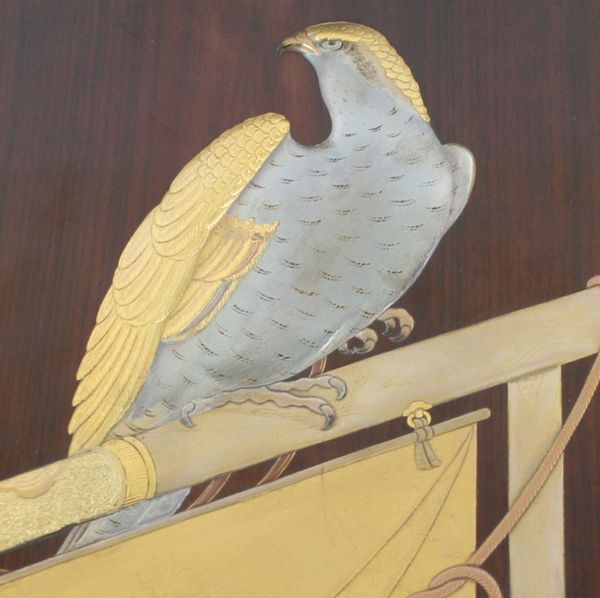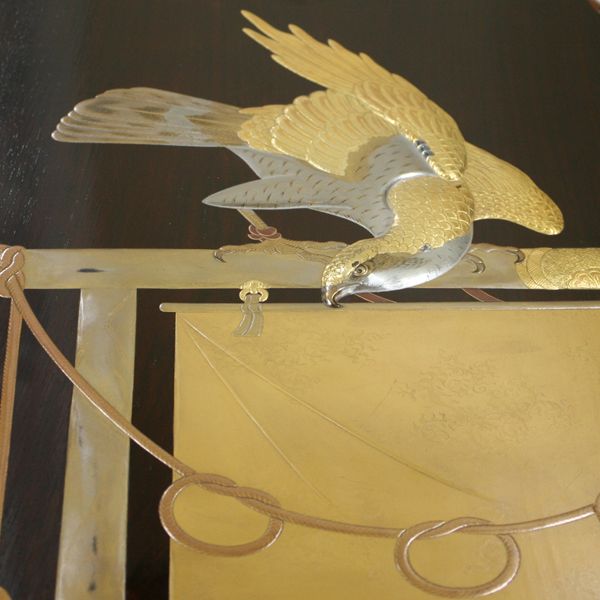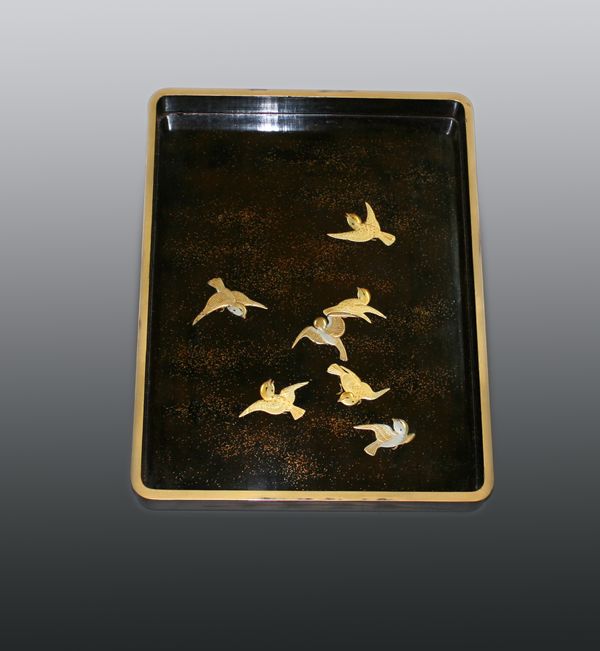|

Enlarge & Zoom |
上段に硯箱をおさめ、下段は料紙箱となっている漆塗の硯箱。
水滴は銀製で亀の形です。
A complete
set of quality silver inlayed gold maki-e lacquer box, a suzuri bako
(writing box) and ryoshi bako (document box),Meiji period, late 19th - early 20th century. It is quite rare to
find a complete original set with this particular subject, hunting
hawks. The equipment for the falconry is depicted on the side of the
boxes with maki-e techniques (gold gilt).The writing box accompanies
a silver water dropper in the shape of tortoises as well as brushes
and a small knife. The box is made of rose wood, which applied thin
layers of lacquer enhancing the natural beauty of the wood. The
effective use of wood grain and traditional Japanese decorative
motif are a compositional element that is suggestive of the style of
Shibata Zeshin (1807-1891), who was the most prominent maki-e artist
during late Edo- Meiji period in Japan.
Historically, falcon has been considered as a symbol of power and
authority. During Kamakura – Edo period, 12th – 19th century,
falconry became very popular among shogun. As seen in numerous
shogun’s belongings or castles and palaces including Nijō Castle
in Kyoto, the collectible items as well as folding screens and
fusuma sliding doors were often decorated with falcon motif, which
symbolized the
owner’s power.
Condition:There are some abrasions on the decoration and beneath
typical of use, otherwise in good original condition.
There are additional photos are available. Please contact us for
further details |






















